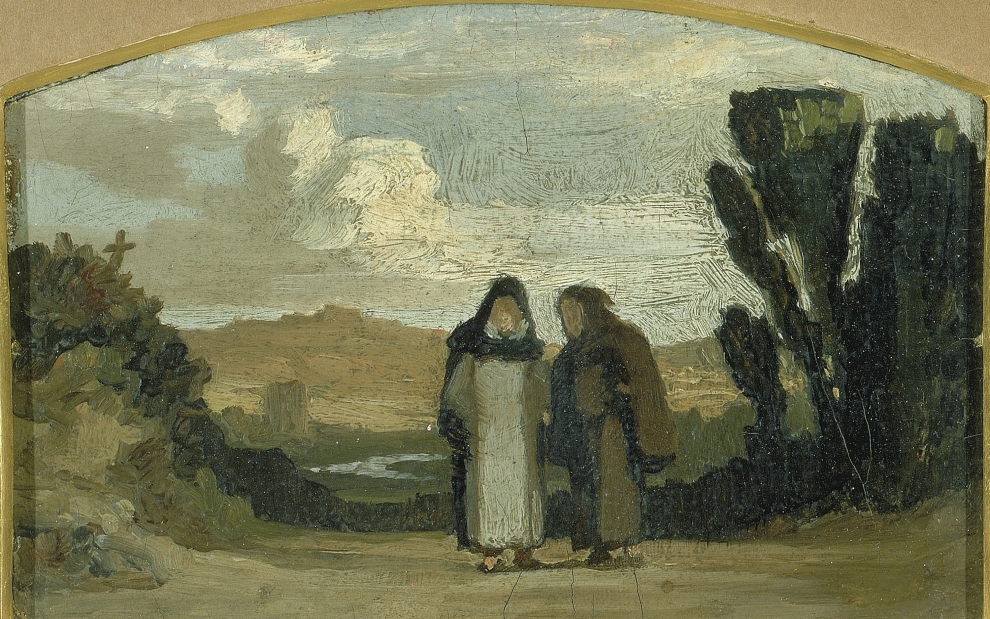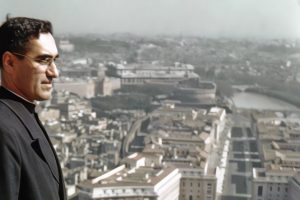Each of us contains a multiplicity of selves. This becomes most obvious to us when we experience an inner conflict of desires. Perhaps our desire for a more creative life feels like it is in conflict with our desire for financial security. Or our desire for a more contemplative life conflicts with the part of ourselves that feels driven to get everything done.
One of these desires is not necessarily better than the other. At their root each desire teaches us something about ourselves and our deeper longings.
Our “inner monk” seeks God as the source of all being, searches for a mystical connection to the divine source, longs for what is most essential in life, and cultivates this through a commitment to spiritual practice.
Our “inner artist” engages the world through the senses and is passionate about beauty, seeking to express it through a variety of media such as visual art, poetry, movement, or song and through pursuits such as gardening, cooking, and relationships. Artists bring a sense of wonder to the world and open up new ways of seeing ordinary as well as transcendent moments.
Both the monk and the artist are edge-dwellers who commit to living in fertile border-spaces and call the wider community to alternative ways of being beyond the status quo. This can be a challenging and sometimes lonely place. It can also be exhilarating and exciting to step out of the boxes in which we live.
Likewise both the monk and the artist are called to hold the space for mystery within and to imagine new possibilities that are not yet fully formed. They are called to discover new questions that need to be asked. They are called to listen to the new thing being formed right in this moment, of which the prophet Isaiah writes:
From this time forward I make you hear new things,
hidden things that you have not known.
They are created now, not long ago.
—Isaiah 48:6–7
The artist practices creativity so that she can allow the new expression to move through her and experience all of life as a work of art. The monk practices contemplation so that he can become conscious of the sacred presence beating through the heart of the world.
Suggested practice: Pause before you begin any creative process. Allow five slow, deep breaths to help you center yourself and remember who the Source of your creative impulses is. Let your creating emerge from this space of openness.
In his Letter to Artists, St. Pope John Paul II writes:
Not all are called to be artists in the specific sense of the term. Yet, as Genesis has it, all men and women are entrusted with the task of crafting their own life: in a certain sense, they are to make of it a work of art, a masterpiece.
The primary creative act is the living of our daily lives, making of them a work of art. This happens through daily attention to practice. To be a writer you must write; to be an artist you must show up to the canvas. Making our lives a work of art means creating space and stillness so we can listen to how the holy is being birthed in our lives.
Suggested practice: Write a blessing for your daily creative work. Bless the pen and paper, the laptop, the paint and brushes, the glue and collage papers. Whichever art form you engage in, ask the Great Artist to guide and support you in your creative unfolding.
In St. Benedict’s Rule, he counsels that monks should “regard all the utensils of the monastery and its whole property as if they were the sacred vessels of the altar.” One fruit of contemplation is that we slowly become more conscious of everything as a sacred vessel. Each person and object, each moment in time is a dwelling place for the holy presence.
When we rush through our days it is easy to forget this, so we practice presence and paying attention. It is a remarkable invitation to consider that everything—every fork and spoon and spatula—is as sacred as the chalice on the altar. The kitchen table is the altar of daily nourishment, offering strength for your work in the world. Your art studio or writing desk is the altar of your creative heart, providing space for you to express the beauty arising within.
St. Teresa of Ávila, the great Carmelite mystic, said to the sisters of her community: “God walks among the pots and pans.” We make artificial divisions between sacred and secular, between what is worthy of our awe and gratitude and what is not. How might we become more conscious of the ways everyday acts and objects are inherently sacred when performed and regarded with intention?
When we focus on whatever we are doing, we discover that God is in the midst of our work and not elsewhere. As artists and writers, we are invited to consider our tools as sacred implements. Brush and paint, paper and pen—these are vessels of holiness.
Our call as artists of everyday life is to consecrate the day with our attention and awareness then bring this holy intimacy with the details of life to the process of creating.
Suggested practice: Create an art altar. Find a corner on your desk or even a sunny windowsill to include a small altar to support your creative process. Prayerfully consider what you might include—perhaps a candle to symbolize the divine light that radiates through your work, a feather to express how you want to hold your process lightly and allow the Spirit to guide you, or a cross to remind you of the way art is incarnational, bringing God’s love into the world in a concrete form.
We find this creative tension between the inner path of the monk and the outer path of the artist reflected in the mystical tradition, where there are two main ways to encounter the divine. The first is the kataphatic tradition, or the way of images. This is the primary path our artistic work engages. It is a process of coming to know God through symbols, art, movement, song, sculpture, architecture, and drama. The kataphatic path honors the ways in which the sacred is revealed through the sensual dimension of this world. It is the expressive work of our inner artists.
The second, complementary path is the apophatic tradition, or the way of unknowing. This is the path of contemplative prayer, of moving beyond image to an experience of the sheer presence of God. God is always beyond the words and symbols we use to try to understand the nature of the divine. The apophatic way honors the truth that the sacred is always much vaster than the language and images we use for definition. It is the contemplative work of our inner monks.
These two paths are integral to our spiritual journey. Being creatures who know the world sensually, the physical world points us to an understanding of God’s multidimensionality. We discover the sacred in color, shape, form, scent, touch, and taste. However, at some point we must also recognize that these experiences do not exhaust the fullness of the sacred, and so we are moved to wordless wonder.
Suggested practice: Allow yourself to move back and forth between the way of images and the way of unknowing. After creating for a period of time, step back and let go of the images that have arisen and rest in a space of mystery and unknowing. See if you can create an opening within you to receive a new inspiration, something you had not anticipated. Don’t try to make something happen. Attend to how the God of mystery and unknowing is at work in you.
This article also appears in the November issue of U.S. Catholic (Vol. 85, No. 11, pages 34-35). Click here to subscribe to the magazine.
Image: Monks on the Appian Way, Elihu Vedder, ca. 1865. Smithsonian American Art Museum.














Add comment